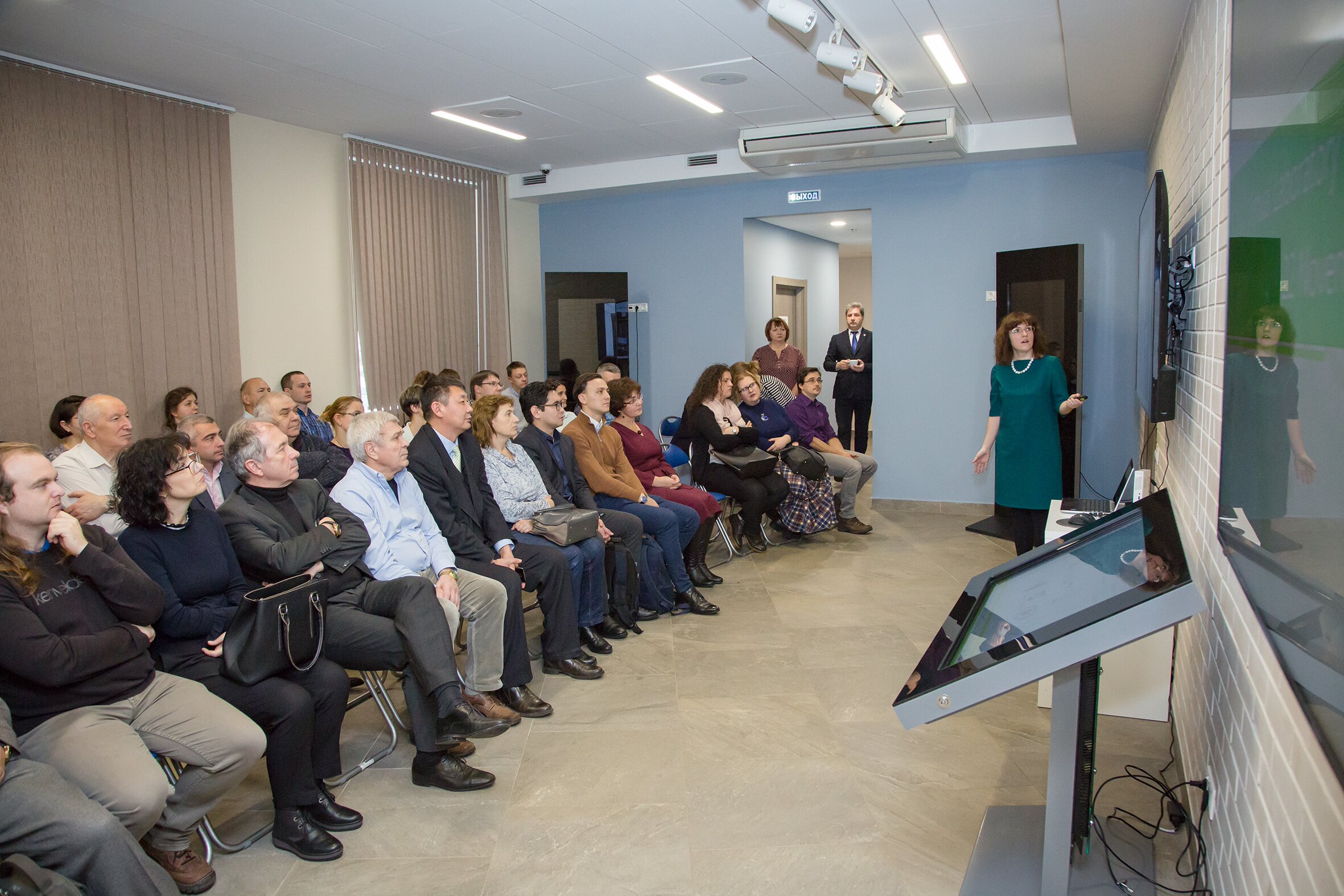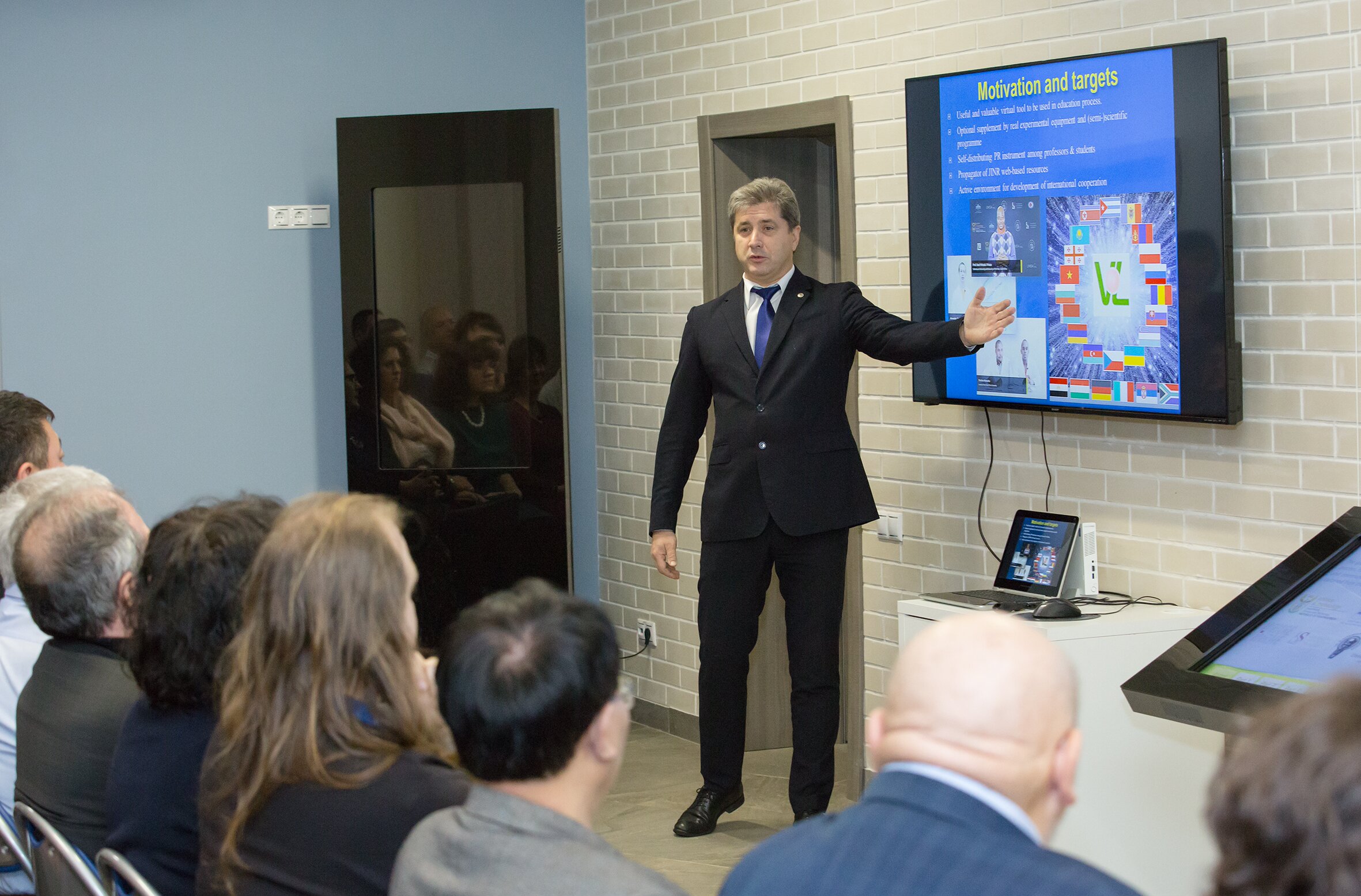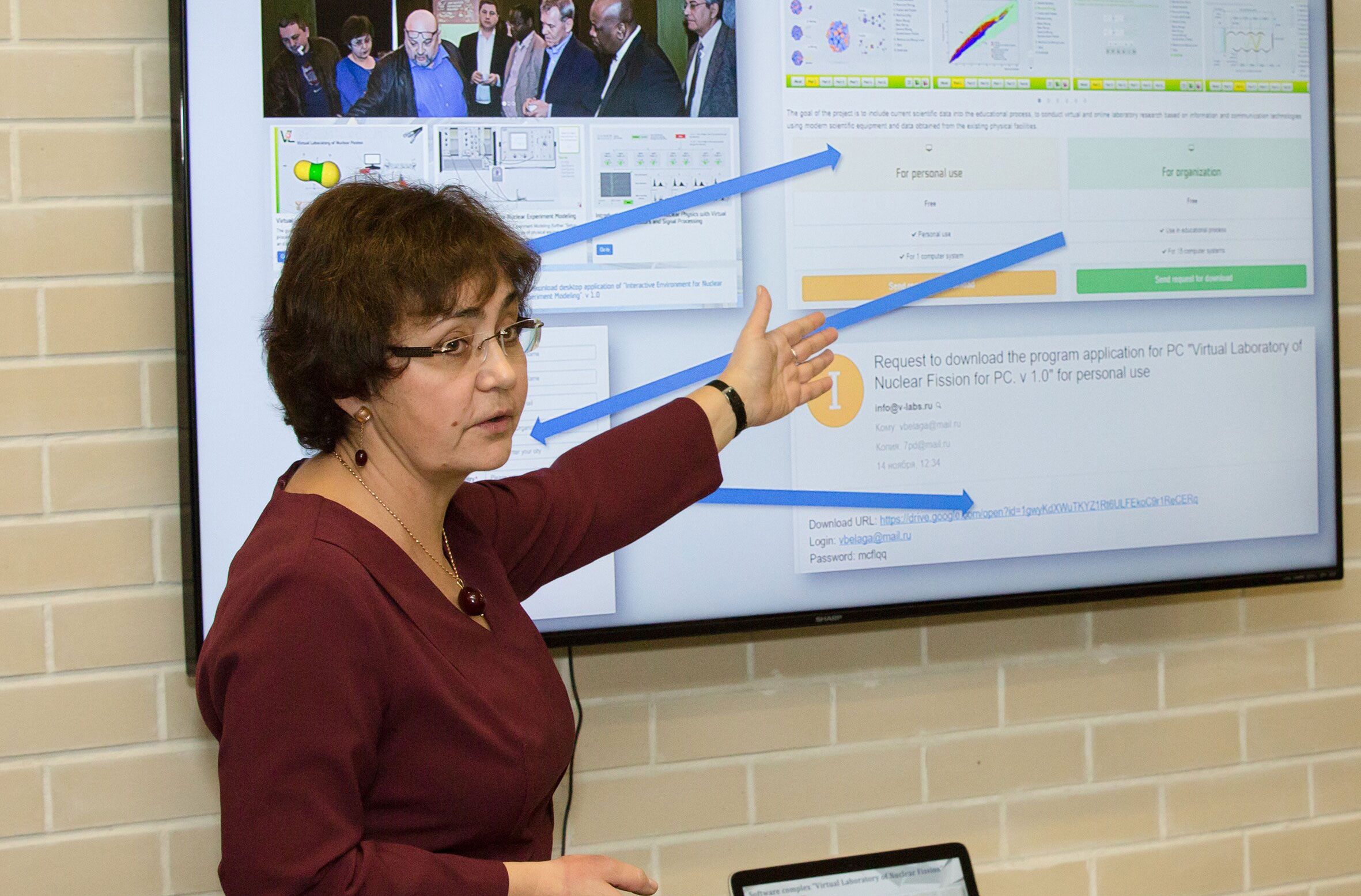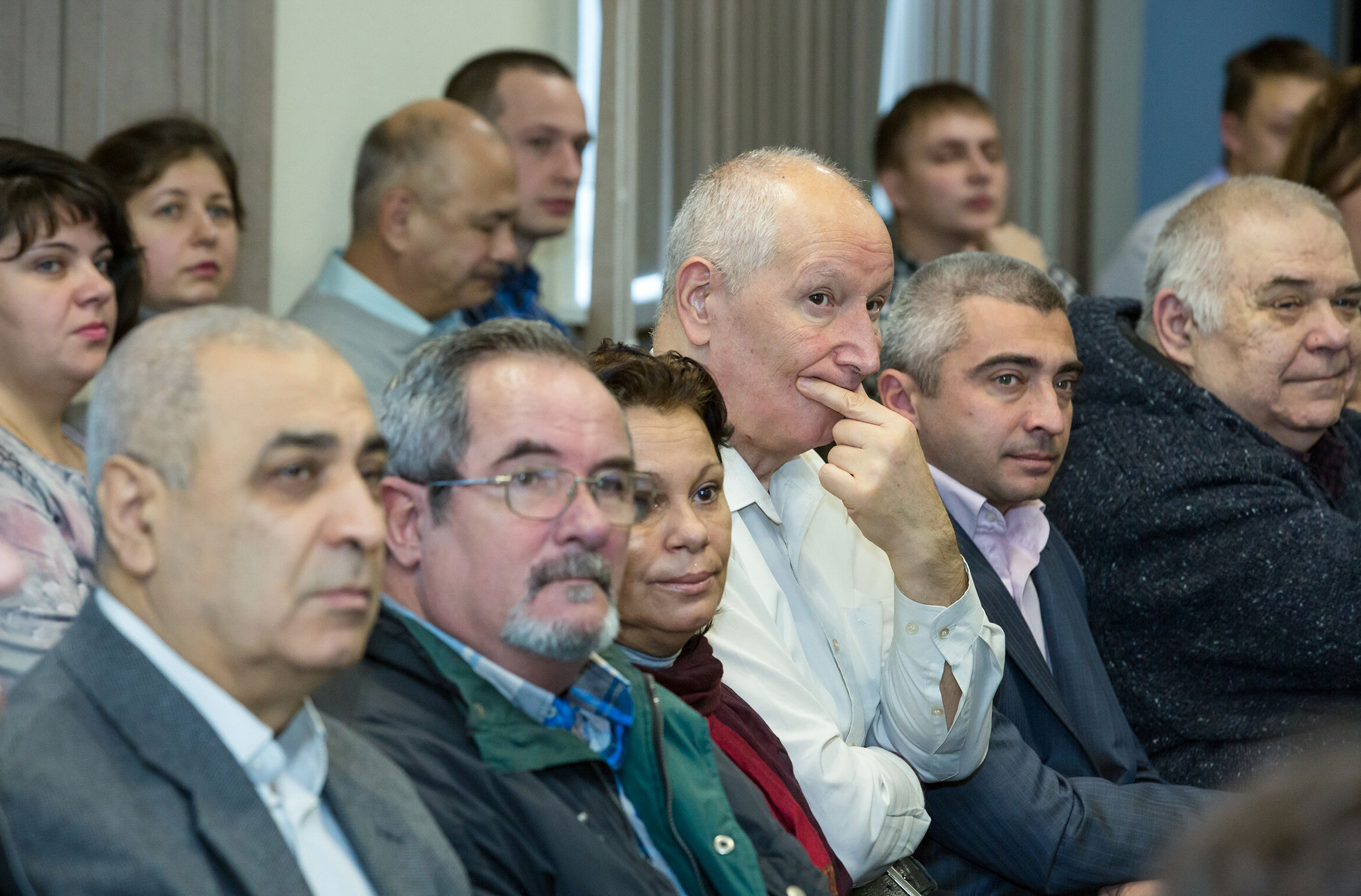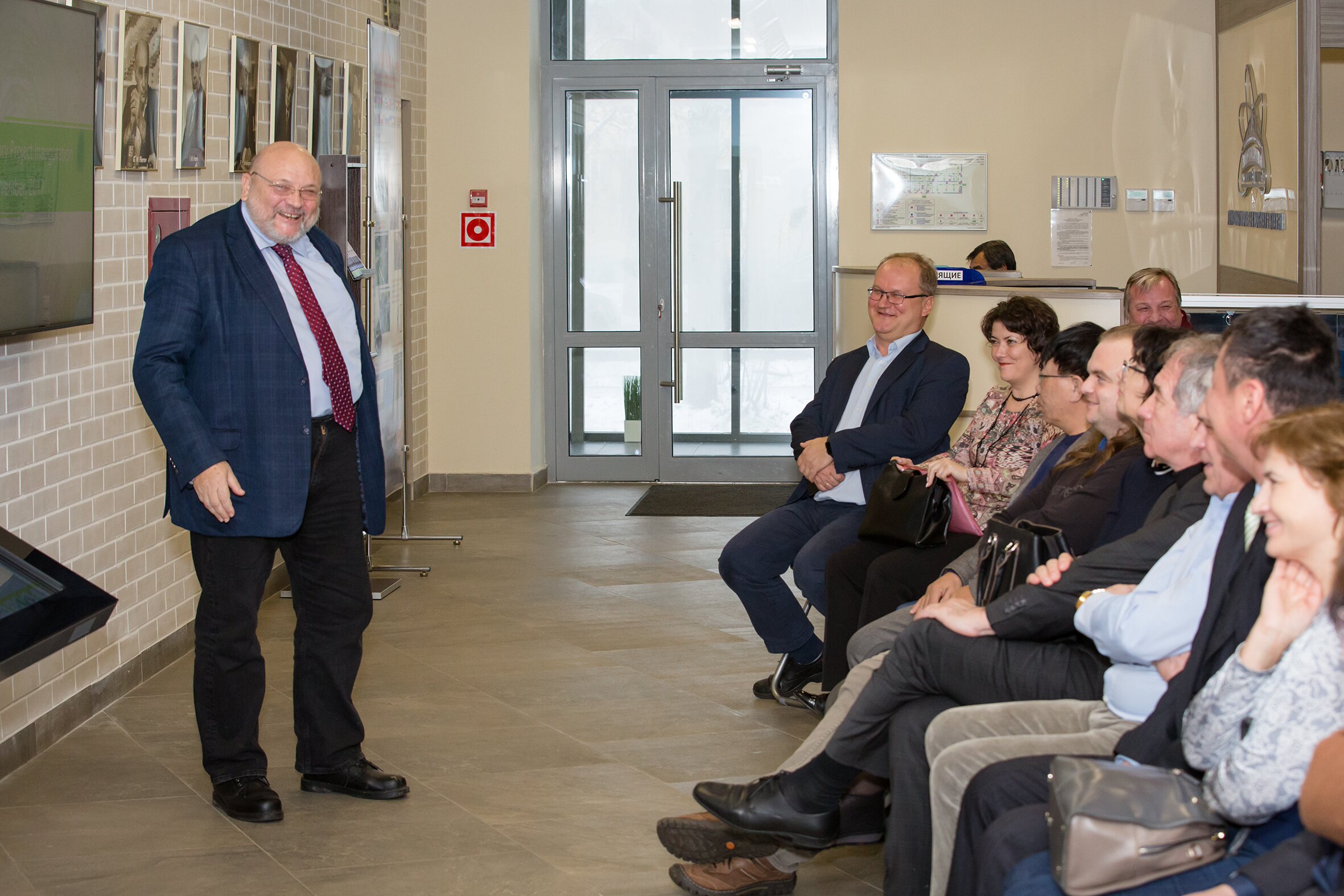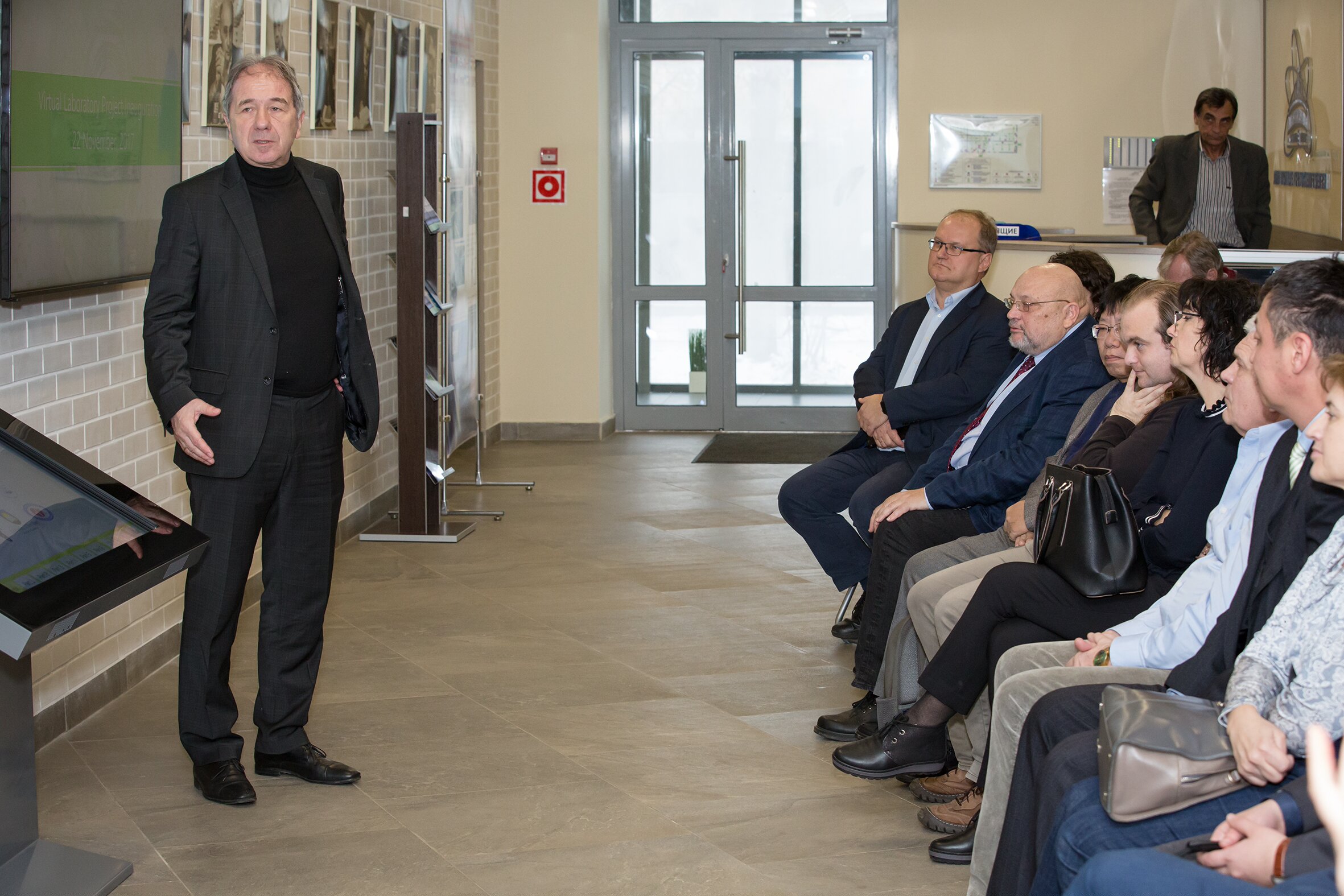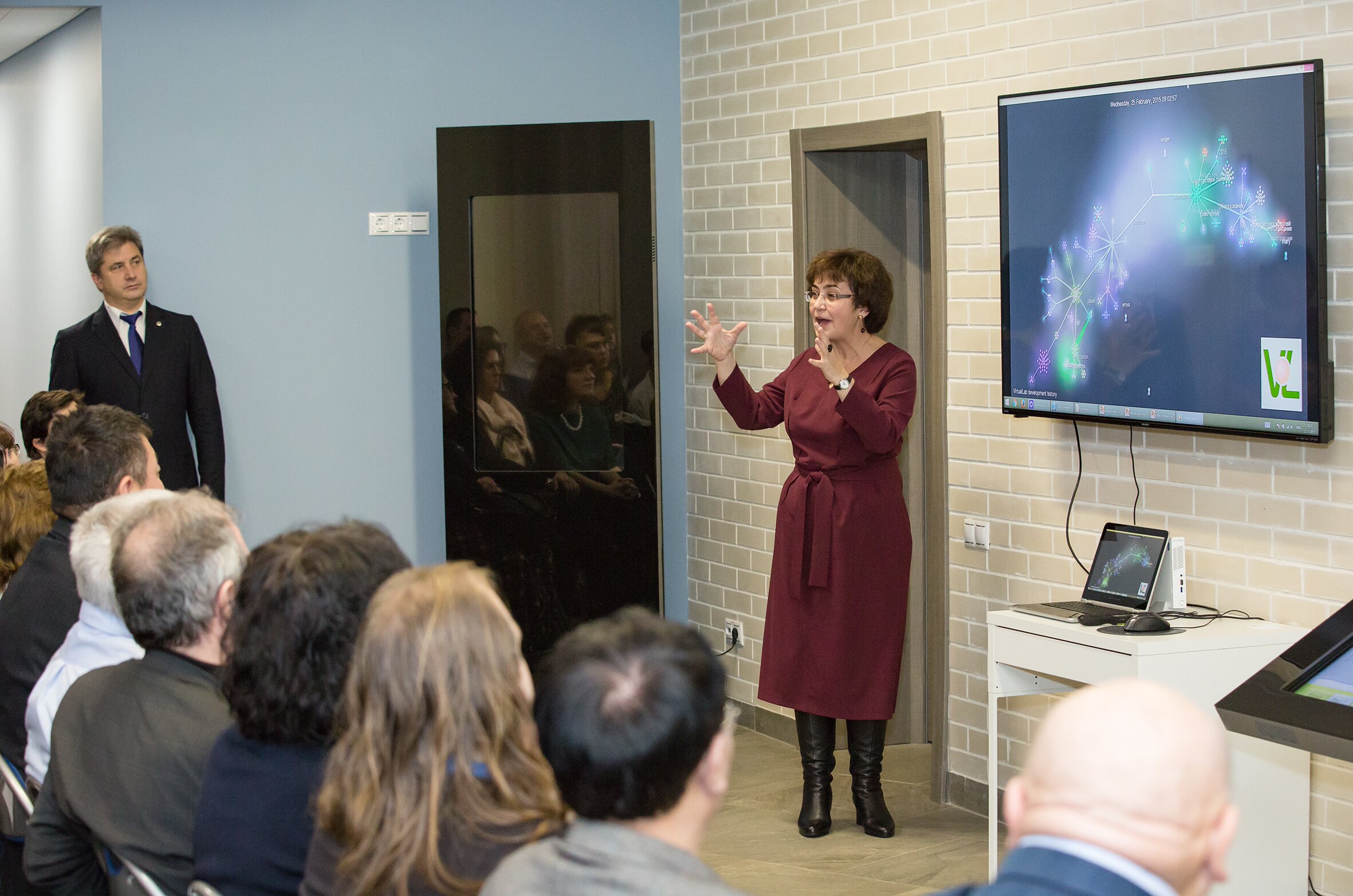Real “Virtual Laboratory”
Education, 23 November 2017
On 22 November 2017, a presentation of JINR large-scale educational project “Virtual Laboratory” was held in the JINR Visit Centre for Members of the Committee of Plenipotentiaries of the Governments of the JINR Member States, the JINR Finance Committee and National Groups of the JINR Member States. Plenipotentiaries of Bulgaria and Vietnam took part in the presentation.
Presentation consisted of brief speeches delivered by project leaders, a general discussion and demonstration of the laboratory work to eager guests. Dmitry Kamanin told about the objectives of the Virtual Laboratory, the project’s history of establishment in collaboration with the Republic of South Africa, and first experience of its application. Kseniya Klygina told about the layout of the Virtual Laboratory of Nuclear Fission and possibilities of its use. Victoria Belaga presented major solutions and development prospects for the platform of the Virtual Laboratory at large. Yuri Panebratsev contributed to previous speeches by saying that the project is actively developing, and universities from the JINR Member States and Associated Members took part and continue to participate in the project development.
The “Virtual Laboratory” is an educational platform of brand new type. Thanks to the “Virtual Laboratory”, it is possible to contribute to traditional educational courses of universities, including preparation of students for work with real experimental facilities. This environment allows students not only to get practical skills during laboratory works, but also to simulate virtual experimental facility and set a research task. As B.N.Gikal, JINR Chief Engineer, noted, the “Virtual Laboratory” project is a new way to pass knowledge that fundamentally differs from classical academic modes of study.
Scientific topic of the first stage of the “Virtual Laboratory of Nuclear Fission” project is aimed at study of a spontaneous fission process and, in particular, its rare mode – collinear cluster tripartition. The LIS spectrometer for fission fragments from the Flerov Laboratory of Nuclear Reactions was used as a real prototype. In the nearest future, it is planned to extend the number of project’s topics by creating laboratory works on gamma spectroscopy and neutrons detection. Thus, the project will get new direction – the “Virtual Laboratory of Detectors and Signal Processing”.
It is worth mentioning that in 2014 students from RSA, Egypt, Slovakia, the Czech Republic, Belarus, Serbia and Bulgaria had the opportunity to use this laboratory and make their first steps in experimental nuclear physics during their summer practice in the JINR University Centre.
Now, everyone interested can use the “Virtual Laboratory” by signing in on v-labs.ru. Full version of the Laboratory is available to download for JINR partner universities after filling in the application form on the Laboratory’s website.
According to the project’s authors, development of the “Virtual Laboratory of Detectors and Signal Processing” project will make it possible to bring the educational component of JINR activities up to the next level, it will contribute to promotion of JINR among young scientists, and aid in wide spread of information about JINR and international cooperation development.
